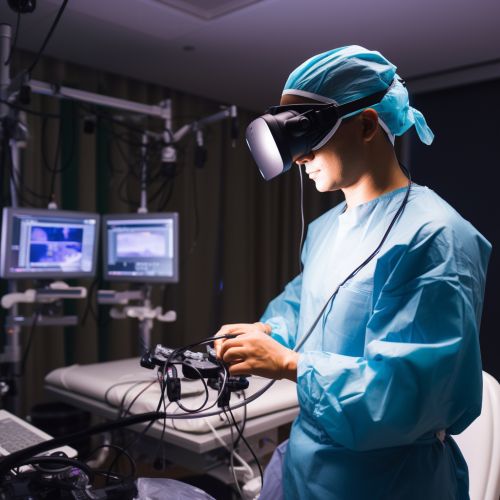The Role of Virtual Reality in Surgical Training
Introduction
Virtual Reality (VR) is a technology that has seen a surge in popularity and usage in various fields, including education, entertainment, and healthcare. One of the areas where VR has shown significant potential is in the field of surgical training. This article explores the role of VR in surgical training, its benefits, limitations, and future prospects.


Overview of Virtual Reality
Virtual Reality is a simulated experience that can be similar to or completely different from the real world. It involves the use of computer technology to create a simulated, three-dimensional world that a user can manipulate and explore while feeling as if he or she were in that world. VR systems typically include a headset equipped with a screen, and multiple sensors that track the user's head and hand movements and adjust the image on the user's screen accordingly.
Virtual Reality in Medicine
The use of VR in medicine is not a new concept. It has been utilized for various purposes, including medical simulation, patient education, and therapy. However, its application in surgical training has gained significant attention due to the unique advantages it offers.
Role of Virtual Reality in Surgical Training
Preoperative Planning
VR can play a crucial role in preoperative planning. Surgeons can use VR to visualize the patient's anatomy in a three-dimensional view, which can help them understand the patient's condition better and plan the surgical procedure more effectively. This can potentially reduce the risk of complications during surgery.
Skill Acquisition
VR can be used as a tool for skill acquisition. With VR, surgical trainees can practice various surgical procedures in a safe and controlled environment. This can help them develop their surgical skills without the risk of harming a patient.
Assessment and Feedback
VR can also be used for assessment and feedback. It can provide objective data on the trainee's performance, such as the time taken to complete a task, the number of errors made, and the level of precision. This data can be used to provide feedback to the trainees and track their progress over time.
Continuing Education
VR can be used for continuing education for practicing surgeons. It can provide them with an opportunity to learn new surgical techniques and procedures, and keep their skills up-to-date.
Benefits of Using Virtual Reality in Surgical Training
There are several benefits of using VR in surgical training. Firstly, it provides a safe environment for trainees to practice and make mistakes without the risk of harming a patient. Secondly, it allows for repetitive practice, which is crucial for skill acquisition and mastery. Thirdly, it provides objective feedback, which can help trainees identify their strengths and weaknesses and improve their performance. Lastly, it can potentially reduce the cost of surgical training by reducing the need for expensive training materials and resources.
Limitations and Challenges
Despite its potential benefits, the use of VR in surgical training also has its limitations and challenges. These include the high cost of VR equipment, the lack of realism in some VR simulations, and the potential for trainees to develop bad habits if the VR simulations are not accurately representative of real-life surgical procedures. Furthermore, there is a need for more research to establish the effectiveness of VR in improving surgical skills and patient outcomes.
Future Prospects
The future of VR in surgical training looks promising. With advancements in technology, it is expected that VR simulations will become more realistic and immersive. There is also a growing interest in the use of VR for team training, where multiple trainees can participate in a VR simulation simultaneously and learn to work together as a team. Moreover, with the advent of artificial intelligence, it is possible that VR simulations could provide personalized training and feedback to trainees based on their individual performance and learning needs.
